Castle Howard Reformatory School, Near Malton, North Riding of Yorkshire
The proposal for a Reformatory School to serve Kingston Upon Hull originated with two men involved in the local judiciary: Samuel Warren, the town's Recorder, and Thomas Travis, a stipendiary magistrate. Having received support from Hull's magistrates, Travis organised a meeting in the town hall on April 12th, 1855. A committee was formed to pursue the scheme, with George Howard, the Earl of Carlisle, proposed as President of the rather cumbersomely named 'Society for the Reformation of Juvenile Offenders for the East and North Ridings of the County of York and the Town and County of Kingston upon Hull'. Money was soon raised to construct premises for a boys' Reformatory on land owned by Howard close to the village of Welburn, near Malton. The establishment was usually referred to as the Castle Howard Reformatory after the Howard family's nearby family seat, which also gave its name to the local railway station. The Reformatory officially came into operation on May 2nd, 1856, with Ishmael Fish was appointed as the establishment's superintendent and chaplain.
The location of the School is shown on the 1911 map below.
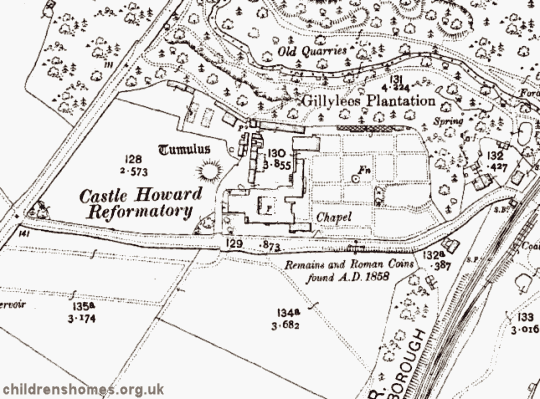
Castle Howard Reformatory site, Malton, c.1911.
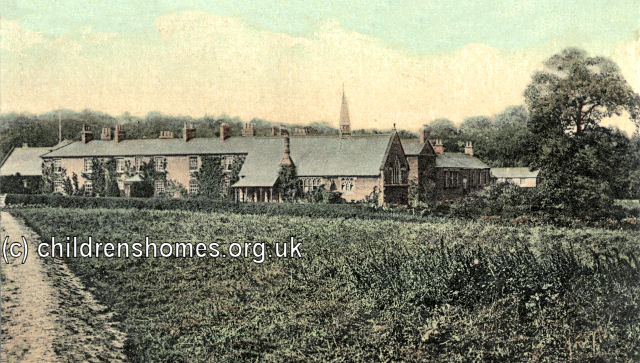
Castle Howard Reformatory School from the south, early 1900s. © Peter Higginbotham
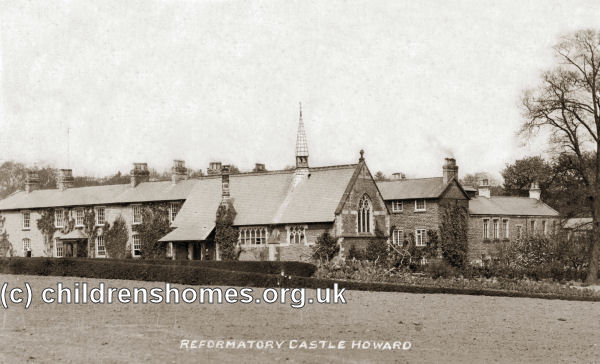
Castle Howard Reformatory School from the south, early 1900s. © Peter Higginbotham
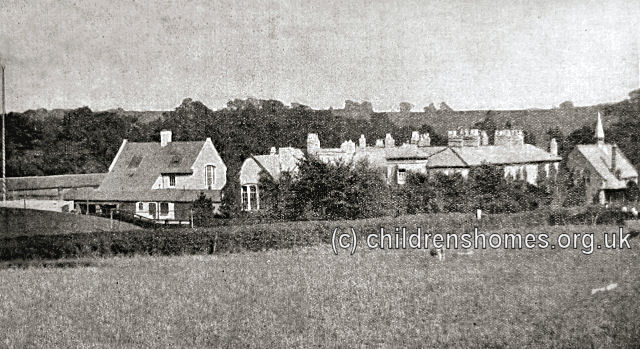
Castle Howard Reformatory School from the south-west, early 1900s. © Peter Higginbotham
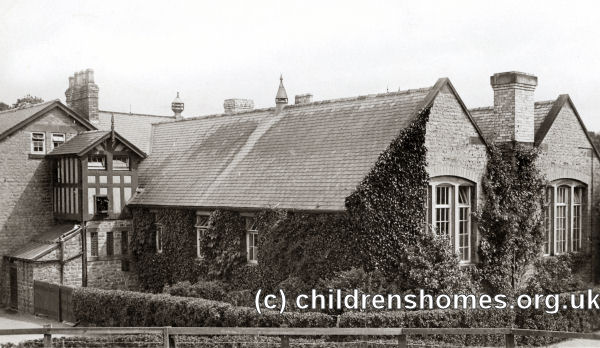
Castle Howard Reformatory School from the north-west, early 1900s. © Peter Higginbotham
The School experienced some early teething problems. Many of the boys were set to work on the farmland but were not well organised so that too many were employed in what would have been better done by a few, and got in each other's way. In 1859, during the Rev. Fish's absence, several boys absconded, and two others set fire to a stack of wheat, destroying most of the harvest. In 1864, several boys joined together to attack the schoolmaster and assistant labour master and then absconded. The deserters were soon apprehended, however, and punished by magistrates with various terms of imprisonment. Broadly, though, the School enjoyed a very good reputation.
As well as working on the Reformatory's own farmland, the boys also worked for neighbouring farmers. Other occupations in which some of the boys received training were tailoring, shoemaking and basket making.
The Rev. Fish retired as Superintendent in 1867. He was succeeded by his brother, the Rev. Richard Fish, whose wife was appointed as matron.
Like many institutions of its type, the School had a boys' band.
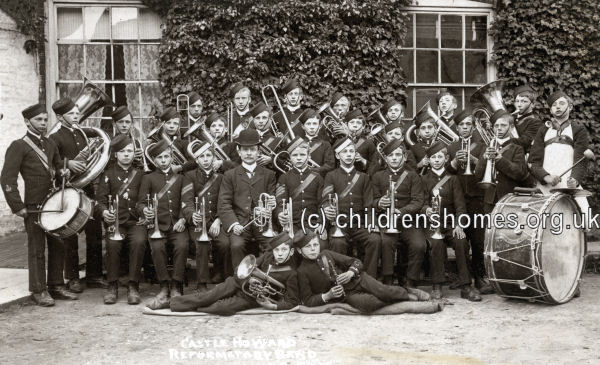
Castle Howard Reformatory School band, early 1900s. © Peter Higginbotham
The bandmaster in the above picture (wearing the bowler hat) was Walter Wyndham Sheppard. He had previously had a military career in 1st Life Guards and was bandmaster to the Frontier Force in Nigeria for six years. His musical education was at Kneller Hall and he played the flute and violin as well as the trumpet that he is holding in the photograph.
An inspection of the School in 1912 noted that 'Swedish exercises on up-to-date lines' were given to all the boys by a visiting instructor. A squad of 24 boys had put on a creditable display of more advanced work in the gymnasium. Cricket and football matches were being played with local clubs. The farm was being well managed, with new piggeries and cowsheds having been built. It was also reported that the boys had recently been provided with slippers, toothbrushes, hair brushes, combs and nail brushes.
In 1933, the institution became an Approved School, one of the new institutions introduced by the 1933 Children and Young Persons Act to replace the former system of Reformatories and Industrial Schools. Castle Howard could then accommodate up to 92 Intermediate boys, aged from 13 to 15. The training it provided continued to be predominantly farming and gardening, including greenhouse work.
In 1936, responsibility for the school was taken over by the Kingston upon Hull Corporation, initially by the Education Committee, and then, in 1948, by the Children's Committee. In 1974, the School was redesignated as the Castle Howard Regional Community Home.
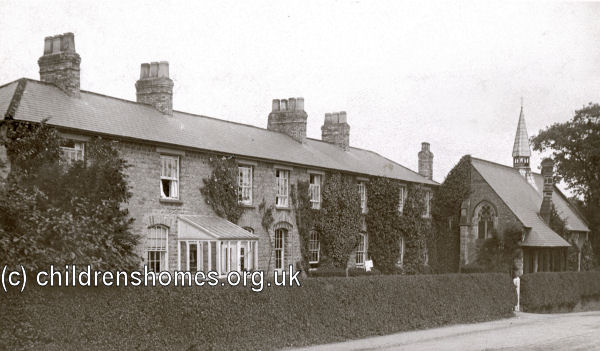
Castle Howard Reformatory from the south-west, c.1912. © Peter Higginbotham
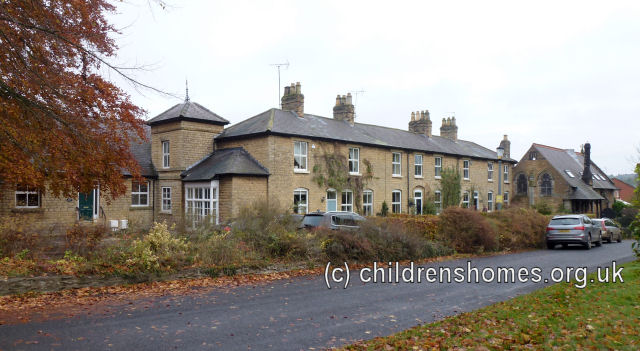
Former Castle Howard Reformatory from the south-west, 2013. © Peter Higginbotham
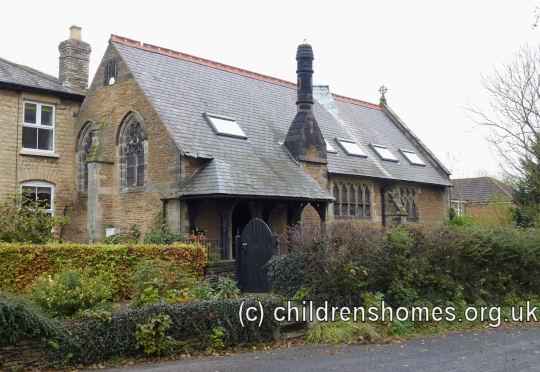
Former Castle Howard Reformatory chapel from the south-west, 2013. © Peter Higginbotham
The Castle Howard establishment closed in 1987. The surviving parts of the building, in what is now known as Crambeck Village, have now been converted to residential use.
Records
Note: many repositories impose a closure period of up to 100 years for records identifying individuals. Before travelling a long distance, always check that the records you want to consult will be available.
- East Riding of Yorkshire Archives and Local Studies, The Treasure House, Champney Road, Beverley HU17 9BA . Holdings include: Annual reports (1904-1913); Admission registers (1894-1971); Licensing registers (1947-1971); Discharge books (1935-1973); After care report book (1974-1975); Daily registers (1962-1987); Punishment book (1911-1973); Photograph albums (mid-1800s-1983); Plans (1927); School prospectus (1964); Cine films (1940s-1950s, transferred to Yorkshire Film Archive).
Bibliography
- Carpenter, Mary Reformatory Schools, for the Children of the Perishing and Dangerous Classes, and for Juvenile Offenders (1851, General Books; various reprints available)
- Carlebach, Julius Caring for Children in Trouble (1970, Routledge & Kegan Paul)
- Higginbotham, Peter Children's Homes: A History of Institutional Care for Britain's Young (2017, Pen & Sword)
- Abel Smith, Doroth Crouchfield: A History of the Herts Training School 1857-1982 (2008, Able Publishing)
- Garnett, Emmeline Juvenile offenders in Victorian Lancashire: W J Garnnett and the Bleasdale Reformatory (2008, Regional Heritage Centre, Lancaster University)
- Hicks, J.D. The Yorkshire Catholic Reformatory, Market Weighton (1996, East Yorkshire Local History Society)
- Slocombe, Ivor Wiltshire Reformatory for Boys, Warminster, 1856-1924 (2005, Hobnob Press)
- Duckworth, J.S. The Hardwicke Reformatory School, Gloucestershire (in Transactions of the Bristol and Gloucestershire Archaeological Society, 1995, Vol. 113, 151-165)
- Higginbotham, Peter Children's Homes: A History of Institutional Care for Britain's Young (2017, Pen & Sword)
- Hyland,Jim Yesterday's Answers: Yesterday's Answers: Development and Decline of Schools for Young Offenders (1993, Whiting and Birch)
- Millham, S, Bullock, R, and Cherrett, P After Grace — Teeth: a comparative study of the residential experience of boys in Approved Schools (1975, Chaucer Publishing)
Census
Links
- Red Lodge Museum, Bristol — a former girls' reformatory.
Except where indicated, this page () © Peter Higginbotham. Contents may not be reproduced without permission.


